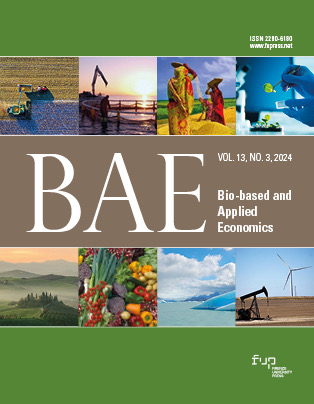Adapting to climate change: what really drives the choices of the producers of Geographical Indications?
Published 2024-04-17
Keywords
- climate change,
- Italy,
- Adaptation,
- PDOs,
- PGIs
- producers’ survey ...More
How to Cite
Copyright (c) 2023 Francesco Pagliacci, Dana Salpina

This work is licensed under a Creative Commons Attribution 4.0 International License.
Funding data
-
Università degli Studi di Padova
Grant numbers PAGL_BIRD20_05 - BIRD 3 2020/2022
Abstract
In an era of rapid climate change, there is an increasing call for the efforts directed at detecting best practices of climate change adaptation in agriculture and understanding the factors behind producers’ willingness to implement adaptation strategies. Many studies consider solely traditional agriculture and specific sectors (e.g., wine), while little attention has been paid to certified and high-quality products, as a whole. To fill this knowledge gap, in 2022 a questionnaire-based online survey was administered to 137 producers of agri-food Geographical Indications in the Veneto Region (north-eastern Italy). Using a multinomial logit model, this study highlights the factors explaining adaptation strategies distinguishing three cases: (i) farmers who have implemented adaptation strategies; (ii) farmers intending to implement them in the future; (iii) farmers neither having implemented nor willing to do so. Results suggest that socio-demographic characteristics, particularly education, matter, with producers holding a high school degree in agriculture showing a greater willingness to adapt. Also, being full-time farmer couples with higher probability of having already implemented adaptation strategies. Lastly, also a direct observation of climate change in the production area affects farmers’ adaptation decisions.






